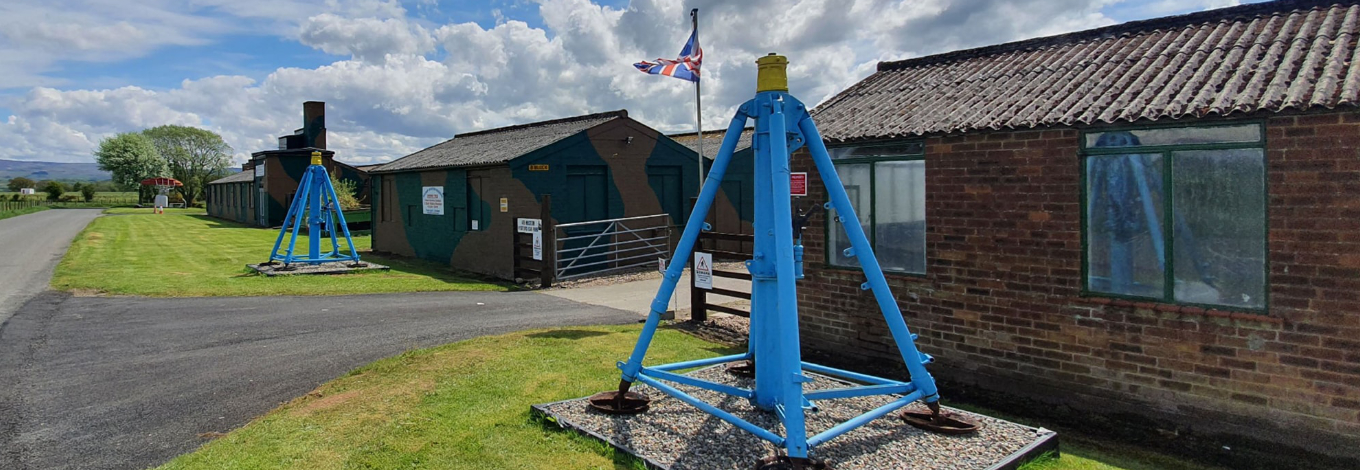The Solway Group of Aviation Enthusiasts was formed on 4th February 1961, by five members of the Royal Observer Corps.
Funds were tight and so for two years members helped to load and unload baggage from visiting aircraft to the airport in exchange for the use of a room in the airport’s operations block for their meetings. The group meetings included guest speakers as well as general aviation discussions and training.
A number of members trained to be Civil Aviation Authority approved fire fighters and provided weekend fire cover at the airport, using one of our members Green Goddess fire tender and the Airport’s Thorneycroft Nubian Crash tender fire engine.
The first aircraft found by the society was a Hawker Hart found in a school loft at Wigton. This aircraft is now on display at the RAF museum.
The Society was the first group ever to renovate a Vampire aircraft, which it acquired from the RAF Museum, to flying condition. It is the only airworthy Vampire left in the UK and still flies at airshows operated by Vampire preservation Group.
In 1983 the group purchased the Vulcan bomber we have on display today. The aircraft was flown from RAF Waddington to Carlisle Airport for the handover. The group changed its name to the Solway Aviation Society.
The museum first opened using a wooden structure in 1988, then later moving into the main museum buildings. The wooden structure had no power, lighting or heating and after a few years the roof collapsed during a gale, leaving a rather damp sorry area.
Through the hard work of the volunteers our museum has continued to expand and now has the three large buildings, two of which you can visit as part of your visit.
We now have more than 20 aircraft on display.
History of the Airfield
In the early 1930s Cumberland Council opened an airport at Kingstown, Carlisle. This then became RAF Kingstown.
With the outbreak of war in 1939 the runway was found to be too short to operate bombers and larger aircraft, so the RAF developed a new airfield at Crosby on Eden.
The airfield was built in 1939 as part of a rapid expansion plan for the RAF. By the beginning of 1941 construction was complete and the first aircraft arrived in March that year.
The first unit to occupy the base was No 59 Operational Training Unit (OTU) in Fighter Command. Flying predominantly the Hawker Hurricane Mk1, They also operated Miles Masters, Fairey Battles, a DH Tiger Moth, DH Dominie, Airspeed Oxford and a Miles Magister.
Trainees included French pilots, who were visited by Brigadier General Charles le Gaulle during their training.
No 59 OTU operated from the airfield until 1942 when they moved to RAF Millfield.
The new occupants of the airfield were the Bristol Beaufighters and Beaufort of 9 OTU (Operational Training Unit) in Coastal Command. As well as training the aircrew to operate the aircraft they were instructed in night flying, instrument flying and dive bombing.
In 1944 flying priorities changed. The D-Day landing plans required larger numbers of transport pilots, so the airfield became home to Transport Command and the Dakotas of 109 Operational Training Unit.
They remained there until 1946 when military flying ceased from the airfield.
The airfield was then used by BEA for passenger services to the Isle of Man, but shortly after was returned to agricultural use.
In 1960 the airfield was purchased by Carlisle City Council and after refurbishment, started to be used again. Renamed Carlisle Airport, scheduled services and flight training schools operated from the airport.
Up until the 2020 COVID lockdown, regular scheduled flights operated from the airport to Belfast, Dublin and London.
At the time of printing general aviation has resumed flying, with the intention to restart commercial fights at a later date.
